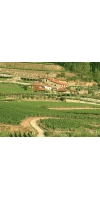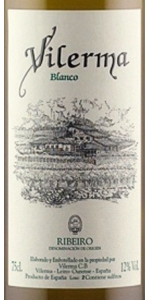Wine from Vilerma - Leiro

The Vilerma - Leiro Estate
Vilerma is owned by Arsenio Paz, who converted the local production from kiwi to grape back in the 1970's as there was a higher demand for Galician White Wine.
The Vilerma - Leiro Vineyards
There are 7 hectares (17.36 acres) of vines which mainly consist of the Ribeiro production varieties: Treixadura, Torrontes, Godello, Albariño and Loureira.
Treixadura grape: Distinguished, harmonious and rounded, Treixadura is the top white variety in the Ribeiro vineyards; it is perfectly suited to the area and is the expression of the full potential of the region. It is gradually being planted to take over from other varieties that are less suitable for the area. It is irreplaceable in the Ribeiro district and was the main variety responsible for the legendary reputation earned by the region's wines
The Ribeiro Denomination of Origin is in Southern Galicia, on the North-West edge of the province of Ourense, where the valleys formed by the Miño, Avia, Arnoia and Barbantiño rivers meet. It has 2,685 hectares of vineyards in the boroughs of Ribadavia, Arnoia, Castrelo de Miño, Carballeda de Avia, Leiro, Cenlle, Beade, Punxín and Cortegada, and in parts of the boroughs of Boborás, San Amaro, Toén, Carballiño and Ourense. The vineyards cover areas of varying altitudes, from 75 to 400 metres above sea level, in valleys and on sometimes very steep hillsides on terraces known as “socalcos” or “bocarribeiras” that follow the contours of the hills.
Vilerma Blanco Ribeiro is made from 80% Treixadura, 6% Torrontes, 4% Godello, 4% Albariño, 3% Loureira and 3% Lado
Ribeiro blanco is produced from estate-grown grapes using traditional winemaking.
Pale yellow color with green highlights.
Intense white fruit aromas when young, it develops complex nuances after a few years in the bottle.
In the mouth it is ample, full and pleasant with a long and fruity finish.
Fermentation in Stainless Steel tank at controlled temperature.
- back
Selected Options
Wineries
Categories
Pricing
Countries
Regions
Grape Types
Wineries
Organic/Free Shipping
Paul Hobbs Chardonnay Russian River Valley is made from 100 percent Chardonnay.
Crafted with precision from six pedigreed sites comes a wine that beams with pale straw hue. The newest vintage brings wonderful aromatic intensity: candied lemon peel, white florals followed by crisp green apple. A creamy and viscous texture on the palate is buoyed by white nectarine and dried apricot that’s balanced with a vibrant acidity, bringing focus to the wine’s finish that lingers with hints of flinty mineral notes.
Review:
A complex Carignan mixing black fruits and spices. Intense color and fine structure with rounded tannins and volume in the mouth.
RS: 2g/L
The fruit was carefully sorted to ensure only healthy, ripe grapes were vinified. Traditional fermentation took place in stainless steel tanks at controlled temperatures of 28°C with selected yeasts. Remontage or pump overs took place periodically to oxygenate the wine and extract tannins. A short post-fermentation maceration took place to extract color, flavor and impart structure to the wine. Ageing in stainless steel preserved the integrity of the pure fruit character. The wine was lightly filtered before bottling.





